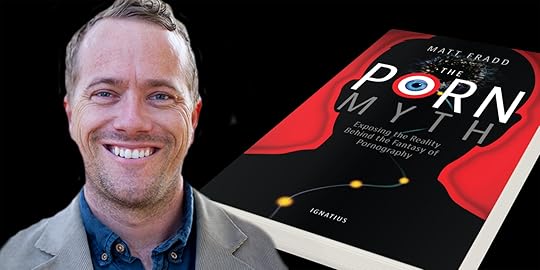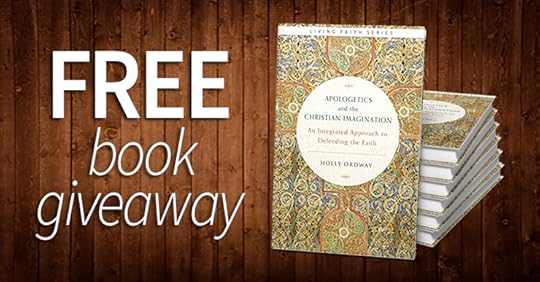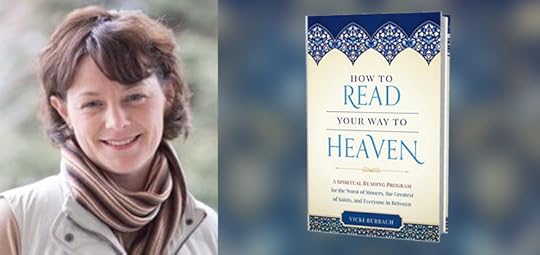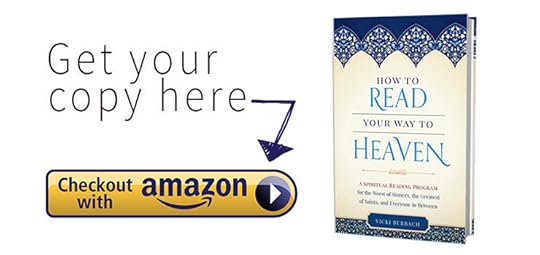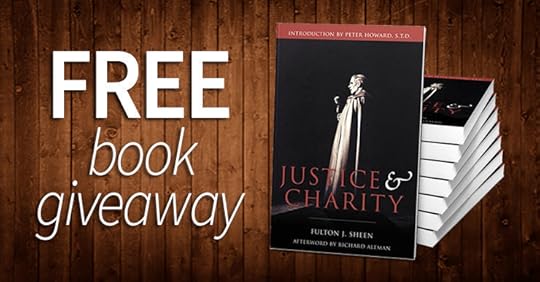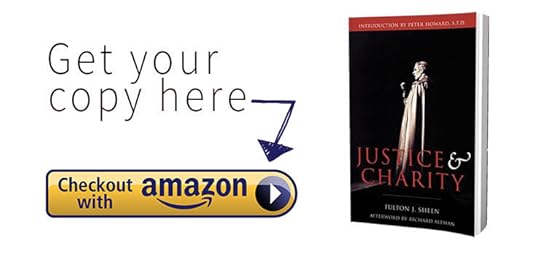Brandon Vogt's Blog, page 4
June 13, 2017
The Porn Myth: An Interview with Matt Fradd
Most people know pornography is harmful. It enslaves viewers, rips apart marriages, and denigrates the lives of so many “performers” who end up used, abused, and discarded.
But lots of people, including an increasing amount of young people, think porn is no big deal. In their minds, people only shun porn for religious reasons or because they’re sexually repressed.
So how do you explain why porn is wrong in non-religious terms? That’s what Matt Fradd aims to do in his new book, The Porn Myth: Exposing the Reality Behind the Fantasy of Pornography (Ignatius Press, 2017).
The book is a response to the commonly held belief that pornography is a harmless or even beneficial pastime. Matt draws on the experience of porn performers and users, and the expertise of neurologists, sociologists, and psychologists to demonstrate that pornography is destructive to individuals, relationships, and society. He uses the latest scientific research to discredit the fanciful claims used to defend and promote pornography.
Matt recently sat down to me to discuss his new book and why porn is harmful to everyone involved. Enjoy!
BRANDON VOGT: What is the number one myth about pornography that you encounter? And how do you refute it?
 MATT FRADD: I think the biggest myth surrounds “choice.” We’ve really canonized choice in our culture, haven’t we? Choice is more important than what’s right, what’s good, what’s noble. So people will often say, “Well, people have a right to do whatever they want.” And I usually respond by saying, “Well, people can of course do whatever they want, but it’s prudent before engaging in an action that may have bad effects to take stock of the possible negative consequences of that behavior.”
MATT FRADD: I think the biggest myth surrounds “choice.” We’ve really canonized choice in our culture, haven’t we? Choice is more important than what’s right, what’s good, what’s noble. So people will often say, “Well, people have a right to do whatever they want.” And I usually respond by saying, “Well, people can of course do whatever they want, but it’s prudent before engaging in an action that may have bad effects to take stock of the possible negative consequences of that behavior.”
And so, I really try and educate people and show them that consuming pornography can lead to less satisfying sexual life, it can lead to things like sexual dysfunction, it can lead to sexual aggressiveness, and it can even lead to shrinkage in different parts of the brain, as a 2014 study showed.
These are the sorts of things I wish somebody had told me back when I was 17-18 and engaging in this sort of material. I just thought, like everyone else thought, that this was harmless entertainment and if you were against porn you were somehow anti-sex.
BRANDON VOGT: You talk about a movement called Fight the New Drug. You and others are beginning to refer to pornography more as a drug because of some of its effects. Are there more aspects of pornography that relate to a drug addiction like alcohol, illegal drugs, and things of that nature?
MATT FRADD: Certainly, pornography isn’t a drug in the sense that no one’s injecting it, no one’s inhaling it, that sort of thing. But what pornography consumption does is elicit powerful neurotransmitters in the brain, which the brain can become addicted to.
Very few drugs are addictive. In order for a drug to be addictive, it must do something very specific: it must boost a neurotransmitter called dopamine in the reward center of the brain. Drugs don’t create anything new in the brain, rather they amplify or decrease existing mechanisms in the brain.
All mammals have a reward system in the brain and it’s that thing that gives us a craving to engage in behaviors that are either life-promoting or life-enhancing. That’s we get that big feeling of “I’ve got to have that hamburger” or “I’ve got to work out today” or “I want to have sex.” Without dopamine, sexual activity wouldn’t be that exciting.
So, what pornography does is it boosts that dopamine in the reward center of the brain and a down regulation takes place. The reward center begins to numb itself because of the over stimulation. Dopamine literally begins to atrophy and the person is quite honestly in a state of dopamine craving.
So, in order to boost the levels of dopamine up—you know just to feel normal again—they have to look at pornography. But because the dopamine is atrophying, they often seek more deviant or harder forms of pornography in order to get the same high. That’s how pornography acts like a drug.
BRANDON VOGT: you spend several chapters of your book, The Porn Myth, exploring the relationship between pornography and feminism, and I found this to be quite interesting. It’s not unusual to hear one group saying that pornography is empowering for women while another group at the same time argues that it is demeaning and degrading toward women. Help us sort through that a little bit?
MATT FRADD: Whenever we try to engage with someone we disagree with, it’s always important that we do our best to try to understand them. And so, what might the feminist be saying when they try to say pornography can be liberating?
I think what they might mean is, this old Victorian idea that men enjoy sex while women endure shouldn’t be true. And perhaps, in their estimation, sometimes that’s the way we have looked at sex. So some women would like to say, “Look, I can take charge of my sexuality. Pornography can be a liberating thing for me to do. And if I find it liberating, then it’s liberating.”
Now, the first thing to say is that nobody is yearning to go back to this sort of Victorian, puritanical era where the sight of a woman’s ankle could cause scandal. That seems to me to be clearly unhealthy.
But that doesn’t mean that pornography is therefore liberating to women. Allowing millions of men to pleasure themselves while watching you—in many cases being dominated in very unbeautiful ways—and to think that through this you’re somehow fighting a system of patriarchy, to me that just seems exactly wrong. It seems to me you’re feeding the problem, not fighting it.
BRANDON VOGT: We often hear about the moral concerns with pornography, how it objectifies women and demeans sexuality, but what are some of the non-religious arguments for choosing “real love” over porn as you discuss in your book?
MATT FRADD: I’m going to say something that sounds like it’s out of the middle of a Hallmark card: I think we’re made by love, to love, and for love. And as a Christian, I think that’s theologically accurate, that we have love as our origin, love as our vocation, and love as our destiny. Therefore, if we don’t get love right, we won’t get life right.
The more we participate in activities and behaviors that are contrary to love, the more senseless our life will become. So what is love? Thomas Aquinas would say, “Love is willing the good of the other for the sake of the other.” It seems with pornography consumption at least, something contrary to love is at play. It seems to be merely a matter of use in which I’m not interested in the interior life of this particular performer, her hopes and dreams and aspirations, and so forth. She’s very replaceable. She’s just a collection of body parts and therefore I use her for an ignoble end. And so for that reason, I think no porn use can ever be justified.
Certainly if one uses pornography compulsively, you’ll see more deleterious effects, but even moderate consumption leads to negative effects as well. And so, if we want to have a beautiful life, if we want to have a beautiful sex life, then we should quit porn. I really think, and I’m not trying to be hyperbolic here, that if one is for science and pro-love, then those are two very good reasons one ought to seriously consider being anti-porn.
BRANDON VOGT: Your book, The Porn Myth, concludes with a message of hope. Hope for protecting our children, hope for healing damaged relationships, and hope for breaking addiction for those who may be addicted to this activity. What message of hope would you like to leave readers today?
MATT FRADD: Let me say three things, one to the consumer, one to their spouse, and then one to any parents. To the porn consumer, maybe you’re a man, maybe you’re a woman who consumes pornography, I just want to say, you aren’t your sins. You’re not the bad things you’ve done. You’re not the things you might be addicted to. You are a beloved son or daughter of God, and God certainly is not scandalized by your behavior. He loves you and He knows what you’re really seeking.
What you’re seeking isn’t to hurt people or reduce them to body parts. You’re looking for relief. You’re looking for stimulation and excitement and joy and so forth. And they aren’t to be found in pornography. Just as a brother I would say, trust in the mercy of God. Get to confession if you haven’t already, and then have the strength to consider the possibility that you might need to go to therapy or a 12-step group to get this issue under control.
Second, to the spouses of porn users, I would say this: don’t downplay the trauma that your spouse’s pornography use has taken on you. It’s real and it hurts. Recognize that you’ve undergone a lot and you need healing just as much as your spouse needs healing as well.
Third, to the parents, I would say this: if you’re going to buy your child an electronic device, you must monitor that device. If you’re not willing to monitor it, don’t buy it, because we parents will be held accountable on Judgment Day for how we have raised our children. We must put good filtering and accountability on all of our devices or else what we’re doing is giving our children essentially portable, X-rated movie theaters, and it’s really not their fault when they end up becoming addicted to this stuff.
And so just a word of encouragement to parents, give your kids an internal filter for the unfiltered world in which they live, love them, and don’t get angry with them. Because if you do that they’re never going to come back to you again and maybe share that they’re struggling with this sort of stuff.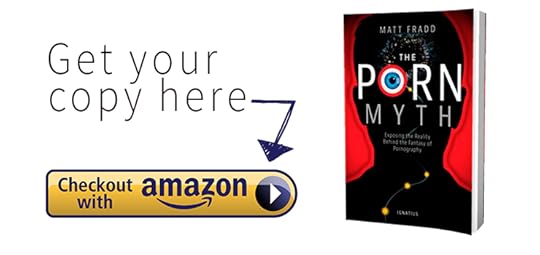
The post The Porn Myth: An Interview with Matt Fradd appeared first on Brandon Vogt.





June 12, 2017
Learning from an Apostle of Encouragement and Service

Today we continue our regular series called “Learning from the Saints.” Our guide is expert Bert Ghezzi, a dear friend of mine and the author of numerous books including Voices of the Saints, Saints at Heart, and Discover Christ: Developing a Personal Relationship with Jesus.
His more recent books are The Power of Daily Mass and The Heart of Catholicism. You can learn more about Bert and his work at BertGhezzi.com.
Today, Bert profiles St. Barnabas, the first-century patron of peacemakers, Cyprus, and Antioch.

We know nothing about St. Barnabas except what Scripture tells us. Luke says he was “a good man, filled with the holy Spirit and faith” (Acts 11:24; NAB). No one could ask for a better recommendation!
The saint was born at Cyprus, a Jew of the tribe of Levi. His given name was Joseph, but the apostles called him Barnabas, that meant “son of encouragement” (Acts 4:36; NAB). That nickname suited him to a T for everywhere he went he seems to have played a major supportive role in establishing the Christian community. While he was not one of the Twelve, the early church recognized him as an apostle.
Wherever Barnabas saw a need he tried to meet it. For example, he sold his property and donated the money to the apostles for the poor. And when Paul arrived in Jerusalem, Barnabas authorized him to the community, overcoming their fears of the former persecutor (Acts 9:26-27).
Later the apostles sent him to care for the fledgling church at Antioch (Acts 11:20-22). He brought Paul from Tarsus to help him., and the community flourished under their leadership (Acts 11:25-26). Twice Barnabas and Paul traveled to Jerusalem on behalf of the church at Antioch (Acts 11:27-30; 15:2 ). He also accompanied Paul on his first missionary journey that began in Cyprus and circuited through Asia Minor (Acts 13:1-2,7).
Before the next missionary journey, however, Paul and Barnabas quarreled over some personal and pastoral matters and decided to separate. Barnabas returned to Cyprus and evangelized the island. Paul’s later references to Barnabas in his letters indicate that the two apostles were ultimately reconciled (see 1 Cor 9:6; Col 4:10).
Early Christians attributed an epistle to Barnabas, which features this distinction of the way of light from the way of darkness:
“There are two ways of doctrine and authority, one of light, and the other of darkness. But these two ways differ greatly. For over one are stationed the light-bringing angels of God, but the angels of Satan are over the other.
“This, then, is the way of light: Love God who created you. Glorify God who redeemed you from death. Be simple in heart, and rich in spirit. Hate doing anything unpleasing to God. Do not exalt yourself, but be of a lowly mind. Do not forsake the commandments of the Lord. Love your neighbor more than your own soul. Do not slay the child by procuring an abortion, nor destroy it after it is born. Receive your trials as good things. Do not hesitate to give without complaint. Confess your sins. This is the way of light.
“But the way of darkness is crooked and cursed, for it is the way of eternal death with punishment. In this way are the things that destroy the soul: idolatry, overconfidence, the arrogance of power, hypocrisy, double-heartedness, adultery, rape, haughtiness, transgressions, deceit, malice, avarice, and absence of any fear of God. Also in this way are those who persecute the good, those who hate truth, those who do not attend to the widow and orphan, those who do not pity the needy, those who murder children, those who oppress the afflicted and are in every respect transgressors.”
Barnabas himself walked in the way of light. He did not exalt himself, but saw himself as a servant. He was not full of himself, nor was his head swollen with big plans. He just did what needed to be done—an excellent model of service for us all.
Legend says Barnabas died at Salamis. Cyprus, in AD 61.
Read more from Bert at his website www.BertGhezzi.com, or check out his many books on Amazon.
The post Learning from an Apostle of Encouragement and Service appeared first on Brandon Vogt.





June 8, 2017
The Crazy Questions My Kids Asked Bishop Barron
Many of you know that my family is currently on a cross-country road trip (32 days, 7,000+ miles, five young kids, lots of fun!) A few weeks ago we left Orlando, FL and drove all the way to Santa Barbara, CA, stopping at several places along the way. (Look for a photo recap soon!)
While in California, we spent a few days hanging out with Bishop Barron, and the highlight for the kids was getting to “interview” him in our Word on Fire recording studio for a special episode of “The Word on Fire Show.” They prepared questions for him in advance, and some were really good (“How do we know God is real?”) Others were, well, a bit silly. But they had a blast being “on the radio” and are still excitedly talking about it.
Click the PLAY button below to listen to their whole interview. And again, be on the lookout for some road trip pictures soon!
(If you don’t see the audio player above, click here to listen.)
The post The Crazy Questions My Kids Asked Bishop Barron appeared first on Brandon Vogt.





May 31, 2017
Book Giveaway (5 copies): “Apologetics and the Christian Imagination“ by Holly Ordway
“Find out how much God has given you and from it take what you need; the remainder is needed by others.” — St. Augustine
Since I’ve built up a large collection of extra books and resources, every week I give some away absolutely free, no strings attached. Each giveaway lasts seven days with a new one beginning every Friday. You can enter any time during the week. Check out my past giveaways here.
Today I’m giving away FIVE copies of an exciting new book by Holly Ordway, the atheist-to-Catholic convert who I interviewed here on the site. Here new book is titled Apologetics and the Christian Imagination: An Integrated Approach to Defending the Faith. Learn more and enter below!
Apologetics and the Christian Imagination: An Integrated Approach to Defending the Faith
by Holly Ordway
Emmaus Road Publishing, 206 pages, hardcover
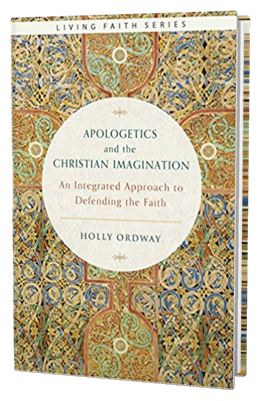 Apologetics, the defense of the Faith, shows why our Christian faith is true—but it’s much more than that. Apologetics isn’t just the province of scholars and saints, but of ordinary men and women: parents, teachers, lay ministry leaders, pastors, and everyone who wants to develop a stronger faith, to understand why we believe what we believe, to know Our Lord better, and love him more fully.
Apologetics, the defense of the Faith, shows why our Christian faith is true—but it’s much more than that. Apologetics isn’t just the province of scholars and saints, but of ordinary men and women: parents, teachers, lay ministry leaders, pastors, and everyone who wants to develop a stronger faith, to understand why we believe what we believe, to know Our Lord better, and love him more fully.
In Apologetics and the Christian Imagination: An Integrated Approach to Defending the Faith, Holly Ordway shows how an imaginative approach—in cooperation with rational arguments—is extremely valuable in helping people come to faith in Christ. Making a case for the role of imagination in apologetics, this book proposes ways to create meaning for Christian language in a culture that no longer understands words like ‘sin’ or ‘salvation,’ suggests how to discern and address the manipulation of language, and shows how metaphor and narrative work in powerful ways to communicate the truth. It applies these concepts to specific, key apologetics issues, including suffering, doubt, and longing for meaning and beauty.
Apologetics and the Christian Imagination shows how Christians can harness the power of the imagination to share the Faith in meaningful, effective ways.
I’m using Gleam to help with the giveaway, which is cool because it allows you multiple entries for posting on Facebook, sharing on Twitter, etc. Click below to enter:
(If you’re reading this through email or RSS and don’t see the giveaway widget, click here.)
By entering this giveaway you agree to occasionally receive email updates from me—no spam, just updates about free books, cool links, and exciting news. n.)
n.)
The post Book Giveaway (5 copies): “Apologetics and the Christian Imagination“ by Holly Ordway appeared first on Brandon Vogt.





May 3, 2017
Learning from a Mystic Who Converted Her Atheist Husband

Today we continue our regular series called “Learning from the Saints.” Our guide is expert Bert Ghezzi, a dear friend of mine and the author of numerous books including Voices of the Saints, Saints at Heart, and Discover Christ: Developing a Personal Relationship with Jesus.
His more recent books are The Power of Daily Mass and The Heart of Catholicism. You can learn more about Bert and his work at BertGhezzi.com.
Today, Bert profiles Servant of God Elisabeth Leseur, the patron of cancer sufferers and incurable diseases.
After Elizabeth Leseur’s death, Felix, her husband, found her notebooks that revealed a passionate spiritual life that she had concealed beneath her genteel, pleasant demeanor. Her simple application of Christian truths to her soul touched him deeply, as did his discovery that she had quietly offered years of great suffering for his conversion. Felix was so moved that he not only embraced Christ but also became a Dominican priest, who traveled throughout Europe speaking about his wife’s spiritual writings.
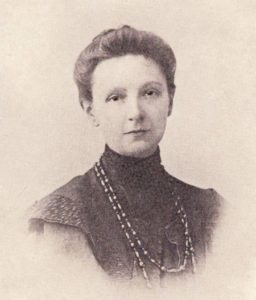 Felix, a doctor, had abandoned his faith when he read the fashionable atheistic literature of the late 19th century. Ironically, his attempt in 1899 to get Elizabeth to read Renan’s Life of Jesus occasioned her spiritual awakening. From that time she kept a journal in which she recorded her progress in making her life a purer and better instrument for serving God and others. God seems to have invaded her soul, giving her a profound awareness of the interdependence of Christians. Isolated from Christian conversation in her marriage, Elizabeth participated by prayer in the communion of saints. And in her social contacts she made it her preference to show kindness particularly to the irksome people who bored her. “I want to have boundless charity,” she wrote, “especially toward those who do not attract me.”
Felix, a doctor, had abandoned his faith when he read the fashionable atheistic literature of the late 19th century. Ironically, his attempt in 1899 to get Elizabeth to read Renan’s Life of Jesus occasioned her spiritual awakening. From that time she kept a journal in which she recorded her progress in making her life a purer and better instrument for serving God and others. God seems to have invaded her soul, giving her a profound awareness of the interdependence of Christians. Isolated from Christian conversation in her marriage, Elizabeth participated by prayer in the communion of saints. And in her social contacts she made it her preference to show kindness particularly to the irksome people who bored her. “I want to have boundless charity,” she wrote, “especially toward those who do not attract me.”
Sick all her life with hepatitis, Elizabeth’s condition worsened after 1908. And in 1911 she was diagnosed with cancer. She calmly accepted the disease’s intense pain, and understood it as a form of prayer. She explained her view in this letter to a woman who was facing blindness:
“I know all that suffering means, the fine and mysterious power it possesses, what it obtains and what it accomplishes. After all, our activity is of little importance. When Providence prefers to work by means of suffering, we should not complain too much. Then we can be sure that the work will be well done and not mixed up with all the misery of egotism and pride which sometimes spoil so much of our outward activity. I know by experience that in hours of trial certain graces are obtained for others which all our efforts had not previously obtained. I have thus concluded that suffering is the higher form of action, the best expression in the wonderful communion of saints. In suffering one is sure not to make mistakes, sure to be useful to others and to the great causes one longs to serve.
“The Stoics said, ‘Suffering is nothing.’ They were wrong. Illuminated by a clearer light we Christians say, ‘ Suffering is everything!’ It demands, it obtains, everything. Through it God consents to accomplish everything. Suffering helps Christ to save the world and souls. When I am overwhelmed by the immensity of my desires for those I love, … it is toward suffering that I turn. It is through suffering that I ask to be allowed to serve as an intermediary between God and souls. It is the perfect form of prayer, the only infallible form of action….Through the cross to the Light.”
After enduring a long agony, Elizabeth Leseur died in 1914 at the age of 48. The cause for her beatification was started in 1934. Her current status in the process is that of a Servant of God.
“I believe that their circulates among souls—those here below, those expiating their sins, and those who have obtained true life—a vast and ceaseless stream of the sufferings, merits and love of all these souls. And that through the divine action even our slightest pains, our least sorrows, can reach out to souls both dear and distant and bring them light and peace and holiness.” — Elizabeth Leseur
Read more from Bert at his website www.BertGhezzi.com, or check out his many books on Amazon.
The post Learning from a Mystic Who Converted Her Atheist Husband appeared first on Brandon Vogt.





April 17, 2017
How to Read Your Way to Heaven: An Interview with Vicki Burbach
St. Josemaría Escrivá once said that, “Reading has made many saints.” But reading what? Magazines? Cereal boxes? Escriva surely didn’t mean reading the stream of breathless news articles on your Facebook feed. He meant to encourage spiritual reading, a special discipline by which we grow closer to God through slow, meditative journeys through the Bible and other holy books.
I’ve seen this in my own life—not that I’m anywhere near a saint, but I’ve experienced real spiritual progress through reading. My daily spiritual routine involves setting aside time to not only pray and go to Mass, but also to read insightful Catholic books.
However, I know this is hard for many people. When I encourage friends to pick up spiritual reading, they usually have several objections. The first is the content question: which books should I read? There are millions of books out there, and I have no idea where to start, or what to choose. Catholics have two thousand years of literary tradition. It’s overwhelming.
Then there’s the logistics question: how do I do spiritual reading? Is it different than regular reading? Also, I’m so busy as it is, so how do I find time to read? Then how do I stay focused and committed?
These are all good questions, and they’re all tackled in a excellent new book by Vicki Burbach titled How to Read Your Way to Heaven: A Spiritual Reading Program for the Worst of Sinners, the Greatest of Saints, and Everyone in Between (Sophia Institute Press, 2016).
Vicki is a trusted guide on the topic. She’s an an avid reader who started the SpiritualDirection.com book club so she could embark with like-minded bibliophiles on a spiritual journey through some of the greatest Catholic books ever written.
So today I sit down with Vicki to ask some of these common questions and learn about her new book. Enjoy!
BRANDON VOGT: Let’s begin by talking about spiritual reading in general. What is it and how does it different from other types of reading?
VICKI BURBACH: Spiritual reading is reading that has as its end, our union with God. This end makes spiritual reading far different from and superior to all other kinds of reading.
I’ve heard people liken spiritual reading to the “self-help” genre. But rather than union with God, the end of self-help is simply improving the self. This is an important distinction. While self-help books tend to submerge us in the natural world, spiritual reading calls us to live, through God’s grace, at a supernatural level. Ironically, though self is not the end, implementing what we learn through spiritual reading results in far greater self improvement than you’ll accomplish through reading any self-help book. But that is because the more we unite ourselves to Christ, the more “whole” we become.
Self-help books often encourage us to turn our focus inward, sometimes even to the detriment of those we love the most—and in the end, to our detriment as well. A case in point is a book I read recently, written by an internationally acclaimed, bestselling guru. The author used his own divorce to illustrate the notion of pursuing one’s goals, no matter the cost. Apparently, he felt his marriage was getting in the way of who he wanted to become, so he was compelled to terminate it.
Imagine a world where each of us did as this author suggests? You needn’t imagine too long. We live in a world that totally promotes that mindset. How’s it working for us?
Where the culture encourages a focus on self, spiritual reading acts as a check on the “self,” reminding us that the “self” is good only to the extent that we align it with the Greatest Good. To the extent that we diverge from His Will, His Goodness, His Truth, His Love, we must be willing to change; and through the grace of God, available through prayer and the sacraments, we can. Ironically, through this process of true self-discovery and improvement, we will achieve greater peace, joy and even productivity than we could ever achieve on our own.
BRANDON VOGT: One of the strategies you discuss in the book is making a firm commitment to read each day. Why is that necessary? And what’s your reading commitment look like? Do you read at the same time each day? In the same place?
VICKI BURBACH: Spiritual reading is exercise for the soul. Most people would agree that physical exercise is necessary for the body. Well, spiritual exercise is necessary is well. Delving into spiritual reading stretches and strengthens our will, our character and our faith if we approach it from the heart, as opposed to simply making it an exercise of the mind.
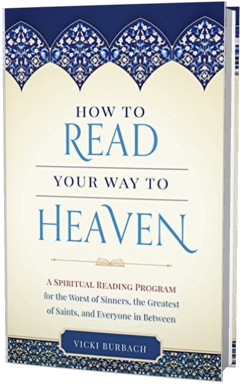 My own commitment is simple. Spiritual reading is part of my morning routine. I would no sooner skip that step in the morning than I would skip brushing my teeth. After breakfast, I sit down in the same chair with my books, journal, a highlighter and a pen. Now that my youngest is six, I can do this relatively easily. I read while my kids are getting dressed and completing their morning chores. Depending on the day, I may schedule more or less time to read. In fact, I actually set a timer for 15-30 minutes. When the timer goes off, I finish my thought, note my place, and begin the next morning right where I left off.
My own commitment is simple. Spiritual reading is part of my morning routine. I would no sooner skip that step in the morning than I would skip brushing my teeth. After breakfast, I sit down in the same chair with my books, journal, a highlighter and a pen. Now that my youngest is six, I can do this relatively easily. I read while my kids are getting dressed and completing their morning chores. Depending on the day, I may schedule more or less time to read. In fact, I actually set a timer for 15-30 minutes. When the timer goes off, I finish my thought, note my place, and begin the next morning right where I left off.
[I strongly recommend reading in the morning if at all possible. I’ve found that reading in the morning allows me to meditate on what I’ve read as I go through my day. It helps me to brace my heart and soul against the concerns of this world and keeps them focused on what matters most—the salvation of my soul, and the souls of my family. It helps me to be less concerned about the cares of the world and more concerned with eternity.
That said, I certainly understand that for some, reading in the morning is not possible. There were many years when I had very young children and reading in the morning was a serious challenge. Back then, I had no choice but to read in the evening. You do what you have to do. There are still safeguards you can take to make sure you get the most out of your reading. One example is to keep a spiritual reading journal. Just a few notes in the evening will do wonders for you the following day. When you wake, you can take a few moments to recap the high points from the night before. This helps get the juices flowing again, allowing all that you read to come back to you in full, that you might meditate and ponder throughout the day all that inspired you in your reading.]
BRANDON VOGT: I think the best parts of your book are the helpful reading plans in the back. Talk about those. How are they structured? What sorts of books did you include? How many pages per day do they require?
VICKI BURBACH: The book is essentially a 1-, 3- or 5-year reading program, designed to meet the needs of the reader. The entire program is laid out to be completely flexible. If you choose the 5-year option, for example, it is important to note that it is a simple checklist without dates, so it can take five years or ten years – depending on your schedule. No matter which program you choose, there are five assignments per week—which leaves two extra days in case you get busy or sidetracked—so you can complete the readings without a problem. It’s not about getting done. It’s about uniting ourselves to Christ. It’s about developing a relationship.
Each year includes reading assignments from one of the four pillars of faith, as described in the Catechism, as well as spiritual reading books that align with that particular pillar. The four pillars of faith are as follows: 1. The Profession of Faith (The Creed – What we Believe), 2. The Celebration of the Christian Mystery (Liturgy & Sacraments), 3. Life in Christ (Ten Commandments & Beatitudes) and 4. Prayer.
So, for instance, in Year Five, you would read 1-2 paragraphs each day in the Catechism as well as books like Meditations from a Simple Path by Mother Teresa, Interior Freedom by Jacques Philipe, Interior Castle by Saint Teresa of Avila, True Devotion to Mary by Saint Louis de Montfort, etc.
Then I topped off the basic program with Sacred Scripture, the most essential component of spiritual reading, what the Catechism refers to as “the speech of God as it is put down in writing through the breath of the Holy Spirit” (CCC 81). Frank Sheed, Archbishop Fulton Sheen, and others recommend beginning with the Gospels, followed by Acts and the Letters of Paul; so in Year One, you do just that. Reading about one chapter per day, you complete the Gospels, Acts, the Letters of Paul, and then the Gospels again. In Years 2-4, you read the Old Testament, and in Year Five, the complete New Testament in one Chapter per day.
Here’s a random day of assignments from Year One:
Year One, Week 12
Day 1:
– Luke 12
– Catechism of the Catholic Church, 105-106 (paragraphs)
– 50 Questions on the Natural Law, Question 17
That’s it. It boils down to maybe one page of Sacred Scripture, not even ½ page from the Catechism, and 6.5 pages from 50 Questions. But if you worry that even that is too much, please remember that it’s not about getting done. When pressed for time, I’ve read Sacred Scripture and the CCC one day, and left the spiritual reading book for the next day. Little by little, you’d be amazed at what you can accomplish.
BRANDON VOGT: Your reading plans include trusted classics that have shaped Catholics for ages, and those lists will keep most Catholics busy for years. But outside of those, how can we decide which books are worth reading? Millions of books are published each year. How do we ensure we’re reading the cream of the crop?
VICKI BURBACH: You’re right. There are millions of books, and trying to figure out where to start can be overwhelming, to say the least. When I joined the Church, I heard somewhere that I should stick to books with an imprimi potest (it can be printed) or nihil obstat (nothing stands in the way), and an imprimatur (let it be printed). These are stamps issued by religious superiors, diocesan censors and local bishops, respectively, guaranteeing that a book’s contents are not in conflict with Catholic teaching. This means that representatives from the Church must closely examine a book before authorizing these stamps. Unfortunately, today, it is very difficult—if not impossible—for the Church to keep up with the mass of books being published. The fact is that diocesan resources have decreased while book publishing has increased exponentially in recent years. Given the challenges involved in obtaining these declarations of magisterial alignment, it stands to reason that many authors/publishers do not obtain them, despite the fact that their books are fully in line with the teaching of the Church.
That said, I think it is it is absolutely true that we want to make sure we are reading books that are true and good (and meaty, meaning they are solid in their content). Sadly, there are books (and organizations) out there that mask themselves as Catholic, but teach falsehoods which can lead us astray. Or authors that even innocently misunderstand our Faith, but perpetuate their misunderstanding by spreading it through the written word.
I’ve found that the safest solution is to seek books from trusted publishers, like Ignatius Press, Sophia Institute Press, TAN Books, Emmaus Road and others; or from organizations like EWTN. You can also trust websites such as SpiritualDirection.com, NCRegister.com or my own—PelicansBreast.com—when they offer suggested reading material. Father John Hardon has an excellent reading list, which is out of print, but can still be found through various sources online.
Also, I would be remiss if I didn’t mention the two appendices in my book, How to Read Your Way to Heaven, that are full of the cream of the crop. The first is a reading list composed of the favorite spiritual books of many of those people to whom we look to for inspiration, education and guidance in the Faith – people like Peter Kreeft, Tim Staples, Father Timothy Gallagher, and many others. The second appendix is Father C. John McCloskey’s Lifetime Catholic Reading List. All of the books in each appendix are fully in line with the Magisterium of the Church, and great stuff for our spiritual enlightenment. In total, there are over 200 books listed.
BRANDON VOGT: Lots of people complain that after reading they forget most of what they took in. How can we make the information stick? And even more, how can we allow our spiritual reading to shape us and draw us closer to God?
VICKI BURBACH: This is something I struggled with for years. I would read a book, all excited about implementing what I learned. But then I’d pick up the next one, and move on, forgetting most of what I’d just read. I knew that the point was to grow in holiness and virtue; you can’t do that without some organized effort. I really needed some rhyme and reason to my spiritual reading.
At one point, I read Mortimer Addler’s How to Read a Book. In it, he talks about syntopical reading, describing this concept as reading passages from several books on the same topic, in close succession. This process allows the information to take shape in our minds, providing a three-dimensional rather than a one-dimensional understanding. It stands to reason that the more perspectives we read on the same topic and the more we practice what we learn, the more we are bound to retain.
In my program, I took the liberty of introducing syntopical reading to the notion of spiritual reading. By organizing reading around one pillar of the Catechism for a full year (or two), readers can not only read from several perspectives on each of the pillars, but can spend a full year putting into practice what they learn about each pillar as they progress. Devoting an extended amount of time on one topic allows us to develop habits, grow in virtue, to unite ourselves to Christ in a profound way.
BRANDON VOGT: Besides the Bible and Catechism, what are the five spiritual books you think every Catholic should read?
VICKI BURBACH: The question every reader wants to answer! Here are some of my favorites:
1. Trustful Surrender to Divine Providence by Jean Baptiste de Saint-Jure and Saint Claude de la Colombiere
2. The Secret Diary of Elisabeth Leseur by Elisabeth Leseur
3. Introduction to the Devout Life by Saint Francis de Sales
4. He Leadeth Me by Fr. Walter Ciszek
5. Anything by Frank Sheed (I know this is cheating, but I can’t choose; Map of Life, Theology for Beginners, Theology and Sanity, To Know Christ Jesus, and others. They are all excellent.)
The post How to Read Your Way to Heaven: An Interview with Vicki Burbach appeared first on Brandon Vogt.





April 5, 2017
Learning from a Spirit-led, Indomitable Activist

Today we continue our regular series called “Learning from the Saints.” Our guide is expert Bert Ghezzi, a dear friend of mine and the author of numerous books including Voices of the Saints, Saints at Heart, and Discover Christ: Developing a Personal Relationship with Jesus.
His more recent books are The Power of Daily Mass and The Heart of Catholicism. You can learn more about Bert and his work at BertGhezzi.com.
Today, Bert profiles St. Vincent Ferrer, the patron saint of builders, construction workers, and plumbers.
Vincent Ferrer was an activist. He was renowned as a preacher, miracle worker, adviser to popes and kings and champion of Christian unity. However, he founded his tireless work on a deeply personal spirituality:
“You must open the interior eyes of your soul on this light, on this heaven within you, a vast horizon stretching far beyond the realm of human activity, an unexplored country to the majority of men. The ordinary observer sees in the ocean only the realm of storms, and never guesses that a few feet below the surface its waters are always limpid, and in a scintillating clarity is found vegetation and living creatures of wondrous diversity, marvelous in beauty and structure, mysterious depths where the pearl is formed.
“Such is the depth of the soul where God dwells and shows himself to us. And when the soul has seen God, what more can it want? If it possesses him, why and for whom can it ever be moved to abandon him?
“So, at any price, preserve yourself in that calm through which the soul sees the eternal Sun. This vision of God will also show you yourself. The heights of greatness will show you the depths of misery. But fear nothing….When you have realized your true worth you will be able to judge your faults sanely, your own crimes will come home to you in full light, and the faults of your neighbor will remain in shadow.”
This sense of peace with God steadied Vincent for his service in the stormy fourteenth century, when plague, famine, and war devastated Europe. And heresy and division racked the Church. His life spanned the Great Western Schism, when there were rival popes at Rome and at Avignon, France. Vincent was loyal to the Avignon popes, but he pressured them to cooperate with efforts to restore unity.
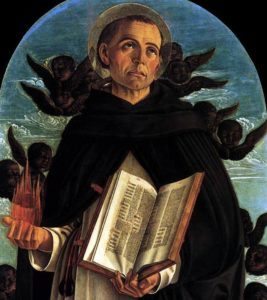 The schism reached its nadir after 1409 with three men claiming to be pope. At the Council of Constance in 1414, the bishops resolved to depose one claimant and ask the other two to resign, so that a new pope could be elected. The pope at Rome was willing to abdicate, but Benedict XIII, Vincent’s friend, adamantly refused. Vincent then declared publicly that because Benedict was blocking the unity vital to the Church, the faithful could justly withdraw their allegiance. Thus, the saint’s vast popularity significantly contributed to ending the schism. Benedict was ultimately deposed, the Roman pope stepped down and a new pope was chosen.
The schism reached its nadir after 1409 with three men claiming to be pope. At the Council of Constance in 1414, the bishops resolved to depose one claimant and ask the other two to resign, so that a new pope could be elected. The pope at Rome was willing to abdicate, but Benedict XIII, Vincent’s friend, adamantly refused. Vincent then declared publicly that because Benedict was blocking the unity vital to the Church, the faithful could justly withdraw their allegiance. Thus, the saint’s vast popularity significantly contributed to ending the schism. Benedict was ultimately deposed, the Roman pope stepped down and a new pope was chosen.
Vincent Ferrer’s main work, however, was revitalizing faith at the grass roots. In 1398, the saint was deathly ill and prayed for recovery so that he might continue preaching. Vincent said that Christ appeared and healed him. “You will preach repentance throughout the world,” Jesus had said, which the saint took as a commission.
For twenty years after 1399, Vincent crisscrossed Europe four times on foot. Everywhere, large crowds gathered to hear his message about the folly of sin, the need for repentance and the imminence of the end of the world. Like St. Paul and many other saints, Vincent expected Jesus to come soon to wrap up history. In response to his ministry thousands revolutionized their lives. Thousands also were miraculously healed during his missionary visits. Thus, St. Vincent Ferrer brought new life to people who had been battered by disease and war in the world and by confusion and division in the Church.
“You can only give what you yourself possess. In fact, you must have much more than you attempt to give, to enable you to give without despoiling yourself.” — St. Vincent Ferrer
Read more from Bert at his website www.BertGhezzi.com, or check out his many books on Amazon.
The post Learning from a Spirit-led, Indomitable Activist appeared first on Brandon Vogt.


 [image error]
[image error]

March 17, 2017
Bishop Barron: “If you’re a Catholic, and a genie grants you three wishes, here’s what you say…”
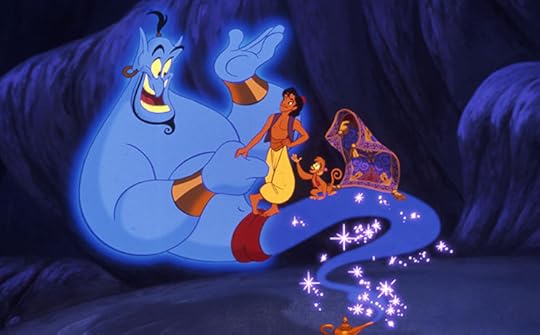
Hopefully you’re subscribed to “The Word on Fire Show,” the weekly podcast and radio program we produce at Word on Fire.
Each week, I sit down with Bishop Robert Barron for half an hour to chat about all sorts of topics, ranging from movies to books to prayer to theology. We’ve done around 70 episodes of the show and they’ve been download over 1.5 million times.
But out of all the episodes, I think the most recent one is the best. It was on the topic of hope, and how it differs from mere earthly desire and attachment.
While I usually host the show, this one was hosted by Joseph Gloor, my Assistant Content Director at Word on Fire. He asked great questions and the Bishop gave fantastic answers.
In particular, one line has stuck with me. Joe and Bishop Barron were discussing the theological virtues (faith, hope, and love) and their worldly substitutes (wealth, pleasure, power, honor), when the Bishop said this:
BISHOP (8:21): “Suppose a genie appeared to you and said, ‘I’ll give you three wishes.’ You might think, ‘Oh! I want to be as rich as Bill Gates, as powerful as Donald Trump, and as famous as Beyoncé.’
But here’s the trouble: if you get all three of those things but your sins remain unforgiven, [those gifts] will destroy you. They will all turn on you and destroy you.
So when the genie comes and says, ‘I’ll grant you three wishes,’ here’s what you should wish for (and I don’t mean this in some pious way):
‘I want faith, hope, and love.’
Then, no matter what else you have, you’ll know what to do with it. Whether you have the fame of Beyoncé, or you’re nobody; whether you have the power of Donald Trump, or you have no power—if you have faith, hope, and love, you’ll know what to do with those things, and they wont destroy you.
So if that genie ever comes—and perhaps it’s an angel instead of a genie (laughs)—that’s what you ask for.
Listen to the entire episode here (excerpt above starts at 8:21).
The post Bishop Barron: “If you’re a Catholic, and a genie grants you three wishes, here’s what you say…” appeared first on Brandon Vogt.





March 3, 2017
Book Giveaway (10 copies): “Justice and Charity“ by Fulton Sheen
“Find out how much God has given you and from it take what you need; the remainder is needed by others.” — St. Augustine
Since I’ve built up a large collection of extra books and resources, every week I give some away absolutely free, no strings attached. Each giveaway lasts seven days with a new one beginning every Friday. You can enter any time during the week. Check out my past giveaways here.
Today I’m giving away TEN copies of a newly reprinted Fulton Sheen book, Justice and Charity. Learn more and enter below!
Justice and Charity
by Fulton Sheen
TAN Books, 192 pages, paperback
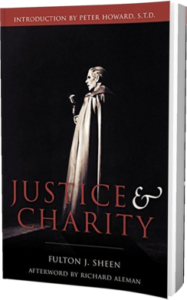 Our country must be built upon a justice and charity in which our individual rights and privileges are conditioned by the service of the common good.
Our country must be built upon a justice and charity in which our individual rights and privileges are conditioned by the service of the common good.
The dominating influence of Capitalism and Communism over modern societies has eclipsed the Catholic Church’s communication of her social and economic principles. Campaigns to win the affections of the faithful have persuaded many that Capitalism with its promise of unlimited freedom and praise for the accumulation of wealth is an authentic expression of Catholic social teaching and that the richness of the social tradition with its preferential option for the poor is driven by class-hatred, envy, and egalitarianism.
Grounded in his expertise of the social doctrine of the Catholic Church, in Justice and Charity, Fulton J. Sheen explores how Capitalism’s failure to submit to justice and Communism’s rejection of Christian Charity can be corrected only by a revolution in the heart of men by means of encountering Jesus Christ. Back in print for the first time since its original publication.
Justice and Charity is a thought-provoking exploration into the social tradition of the Catholic Church led by one of her finest voices.
I’m using Gleam to help with the giveaway, which is cool because it allows you multiple entries for posting on Facebook, sharing on Twitter, etc. Click below to enter:
(If you’re reading this through email or RSS and don’t see the giveaway widget, click here.)
By entering this giveaway you agree to occasionally receive email updates from me—no spam, just updates about free books, cool links, and exciting news.
The winner(s) will be randomly selected next Friday and the books will be sent out, free of charge, shortly thereafter.
(Since I’m covering the shipping costs, only residents within the continental United States are eligible to win.)
The post Book Giveaway (10 copies): “Justice and Charity“ by Fulton Sheen appeared first on Brandon Vogt.





Learning from a Heroic Servant of Marginal People

Today we continue our regular series called “Learning from the Saints.” Our guide is expert Bert Ghezzi, a dear friend of mine and the author of numerous books including Voices of the Saints, Saints at Heart, and Discover Christ: Developing a Personal Relationship with Jesus.
His more recent books are The Power of Daily Mass and The Heart of Catholicism. You can learn more about Bert and his work at BertGhezzi.com.
Today, Bert profiles St. Katharine Drexel, the patron saint of racial justice and philanthropy.
Contemplation and generosity vied for first place in Katharine Drexel’s life. The Philadelphia heiress wanted most to withdraw to a cloister, but her circumstances and gifts pulled her to Christian service.
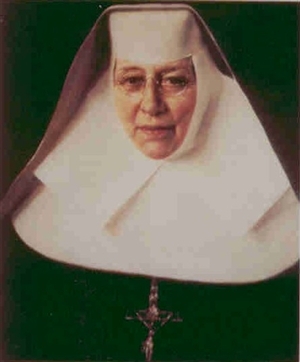 Francis A. Drexel, a world-renowned banker and a man of faith, provided his family a life of ease. And Emma Bouvier, her stepmother, trained Katharine and her two sisters in generous giving. Mrs. Drexel believed God gave wealth to the family to aid others, and regularly involved her daughters in distributing food, medicine, clothing and rent money to the poor. The experience shaped Katharine’s future.
Francis A. Drexel, a world-renowned banker and a man of faith, provided his family a life of ease. And Emma Bouvier, her stepmother, trained Katharine and her two sisters in generous giving. Mrs. Drexel believed God gave wealth to the family to aid others, and regularly involved her daughters in distributing food, medicine, clothing and rent money to the poor. The experience shaped Katharine’s future.
Both parents died by 1885, leaving Katharine and her sisters to share the annual income from a 14-million-dollar estate. Right away Katharine began to donate thousands of dollars to the Bureau of Catholic Indian Missions for the construction and staffing of schools for Native American children, which became her life’s passion.
At this time, however, Katharine’s spirit was in turmoil. Bishop James O’Connor, her spiritual director, thought she should remain a single woman serving in the world. But she wished to become a contemplative nun. She wrote him in 1886:
“My heart is very sorrowful because like the little girl who wept when she found that her doll was stuffed with sawdust and her drum was hollow, I, too, have made a horrifying discovery and my discovery like hers is true. I have ripped both the doll and the drum open ands the fact lies plainly and in all its glaring reality before me: All, all, all (there is no exception) is passing away and will pass away.
“European travel brings vividly before the mind how cities have risen and fallen, and risen and fallen; and the same of empires and kingdoms and nations. And the billions and billions who lived their common every day life in these nations and kingdoms and empires and cities, where are they? The ashes of the kings and mighty of this earth are mingled with the dust of the meanest slave.
“Day succeeds day and, as Byron so beautifully expresses it, when the heavens grow red in the western sky, “The day joins the past eternity.” How long will the sun and moon, the stars continue to give forth light? Who can tell? Of one thing alone we are sure. In God’s own time—then shall come the Son of Man in great power and majesty to render to each according to his works.”
“The question alone important, the solution of which depends upon how I have spent my life, is the state of my soul at the moment of death. Infinite misery or infinite happiness! There is no half and half, either one or the other. And this question for me is to be decided at most in seventy years, seventy short years compared with eternity.”
In 1891, Katharine resolved the tension by founding a new religious community, the Sisters of the Blessed Sacrament for Indians and Colored People, that combined prayer and social action. By 1904, 104 sisters had joined her. Katharine established 145 Catholic missions and 12 schools for Native Americans and 50 schools for Blacks. During her lifetime she gave away about twenty million dollars, mostly for these causes.
In 1935, Katharine suffered a severe heart attack. Two years later she retired and got her heart’s desire—18 years of quiet contemplation before she died in 1955 at age 97.
Katharine’s vast inheritance was distributed among her father’s 29 favorite charities. Not a penny went to her own community. She wanted her sisters to live by faith, trusting God—not money—for everything.
Read more from Bert at his website www.BertGhezzi.com, or check out his many books on Amazon.
The post Learning from a Heroic Servant of Marginal People appeared first on Brandon Vogt.





Brandon Vogt's Blog
- Brandon Vogt's profile
- 75 followers


